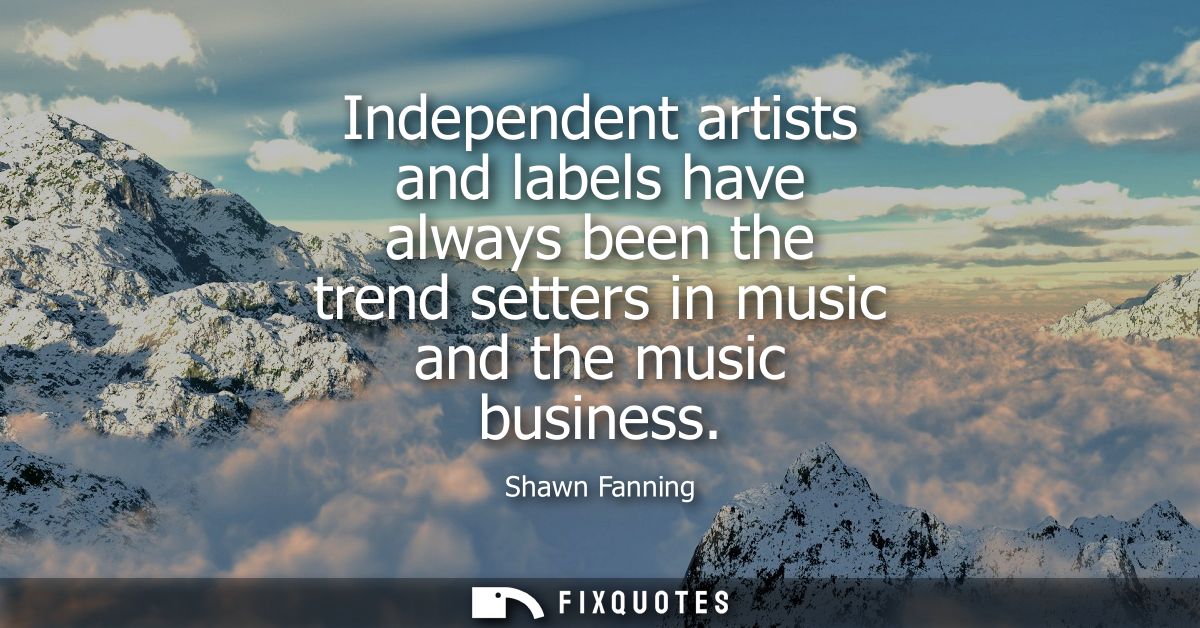"Independent artists and labels have always been the trend setters in music and the music business"
About this Quote
Shawn Fanning observes a fundamental dynamic in the music industry: independent artists and labels often drive innovation, creativity, and the evolution of musical trends. Rather than simply following established paths laid out by large record companies, these independents are typically more agile, experimental, and responsive to the cultural environment. They explore new sounds, ideas, and business practices that frequently pave the way for mainstream music.
Historically, many genres and movements, punk, hip-hop, grunge, EDM, and indie rock, among others, have originated from grassroots, do-it-yourself efforts outside the major label system. Independent artists and smaller labels possess the freedom to take risks, sidestep conventional commercial constraints, and connect with niche audiences. Their willingness to push boundaries enables them to identify and develop new trends before they reach mass popularity. When these trends prove successful, larger corporate entities often adopt and refine them for wider distribution, but the initial creative spark almost always emanates from the independent sector.
In terms of business, independents have pioneered innovative strategies for releasing and marketing music. They have adapted quickly to technological changes, such as the rise of digital distribution and streaming platforms, and embraced direct-to-fan models that allow a more personal relationship between creators and listeners. Likewise, the use of social media, crowdfunding, and DIY production techniques has enabled independent musicians to maintain control over their artistry and careers, setting examples that even major artists eventually follow.
Their influence is not limited to the sound and structure of music; it extends to the business models that shape the industry. By consistently challenging norms and experimenting with alternatives, independent artists and labels set the pace for cultural and industry-wide change, inspiring both audiences and the mainstream. The vitality and originality at the independent level ensure that music remains dynamic, relevant, and reflective of diverse voices.
More details
About the Author

